Apple trees for sale
Apples are a fantastic, reliable fruit to grow in the UK and we have a large range of varieties available to choose from on various rootstocks ranging from dwarf to semi-vigorous.
Let Us Choose
If you don’t know what to get, don’t worry. We’re happy to pick something out for you :)
Use the product below to place an order for apple trees chosen specially for you, by us.
You’ll fill in a form at checkout telling us a few details to help us make a good choice for you.
A red fleshed dessert variety with medium sized fruit. A disease resistant variety.
Type: Dessert
Season: Sep-Nov
Pollination: Self-fertile. Pollination group C
An early season cooking apple producing large, pale green-skinned fruit with a sharp flavour.
Type: Culinary
Season: October-December
Pollination: Partially Self-fertile. Pollination group C
A small dessert apple originating from the 1700s. The flesh is very juicy and sweet and the flavour improves in storage.
Type: Dessert
Season: October-January
Pollination: Self-sterile. Pollination group D
A modern, disease-resistant variety with a refreshing sharp flavour. Medium-sized apples with red-flushed skin and crisp, cream-coloured flesh.
Type: Dessert
Season: October-January
Pollination: Self-sterile. Pollination group D
A small, sweet apple which is a favourite with children due to its size. The colour is a deep red, almost purple.
Type: Dessert
Season: October
Pollination: Self-fertile. Pollination group C
A classic English russet variety. The fruit are juicy and crisp with a strong sharp flavour and store well.
Type: Dessert
Season: December-March
Pollination: Self-sterile. Pollination group C
Eating apples
An early season cooking apple producing large, pale green-skinned fruit with a sharp flavour.
Type: Culinary
Season: October-December
Pollination: Partially Self-fertile. Pollination group C
A red fleshed dessert variety with medium sized fruit. A disease resistant variety.
Type: Dessert
Season: Sep-Nov
Pollination: Self-fertile. Pollination group C
A cooking apple named in honour of Queen Victoria's Jubilee. Produces large yellow fruit that make a good addition to juice.
Type: Culinary
Season: September-December
Pollination: Self-fertile. Pollination group F
Cooking apples
A very old variety of apple with an unusual shape, as suggested by the name. A cooking apple, it is juicy with a sharp flavour and cooks down to a puree.
Type: Culinary
Season: Oct-Jan
Pollination: Self-sterile. Triploid (can’t pollinate others). Pollination group C
A large cooking apple that stores well and mellows into a sharp but flavoursome dessert apple in winter.
Type: Dual-purpose
Season: October-March
Pollination: Partially self-fertile. Pollination group D
A popular heavy-cropping dual-purpose variety from Scotland. Red flush stripes over pale green with a creamy white flesh. Excellent refreshing flavour and a reliable cropper.
Type: Dessert/Culinary
Season: September-October
Pollination: Partially self-fertile. Pollination group C
An old Yorkshire cooking apple. Medium sized, flat-round and green, it cooks down to a pleasant flavour and soft, juicy texture.
Type: Culinary
Season: October - December
Pollination: Group C, Self-sterile triploid
The definitive English cooking apple. This vigorous tree produces large, flat fruit with a vivid green skin and acidic white flesh that cooks down to a smooth puree. Stores well.
Type: Culinary
Season: October-March
Pollination: Self-sterile. Triploid (can’t pollinate others). Pollination group D
*indicates a tree grown at another nursery for resale.
A mid-season, heavy-cropping culinary apple with a light, sweet, juicy flavour. With a more compact growth habit, it is a good alternative to Bramley for growing in a garden.
Type: Culinary
Season: September-November
Pollination: Self-sterile. Pollination group C
Cider apples
Sweet, yellow, medium-sized eating apple from America, also good for juicing and cider.
Type: Dessert
Season: November-January
Pollination: Self-sterile. Pollination group D
A traditional cider apple widely grown in the West Country. Produces a sweet, astringent juice and medium bittersweet cider.
Type: Cider
Season: September-October
Pollination: Self-sterile. Pollination group F
An old green russeted apple with a distinctive aromatic flavour. Also great for cooking, juicing and cider making. Stores well.
Type: Dessert/Culinary/Cider
Season: October-February
Pollination: Self-sterile. Triploid (can’t pollinate others). Pollination group D
An excellent dual-purpose variety that is also good in cider. Pale yellow skin with a red flush. Strong flavour with a hint of pineapple. Stores well.
Type: Dessert/Culinary/Cider
Season: October-April
Pollination: Self-fertile. Pollination group C
An attractive cider apple that produces sweet astringent juice and medium bittersweet cider. Excellent when blended with other varieties.
Type: Cider
Season: October
A traditional French cider apple variety producing medium bittersweet juice. Reliable and heavy cropper.
Type: Cider
Season: October-November
Pollination: Self-sterile. Pollination group D
Apples available in dwarf sizes
To order a dwarf tree, you will need to select a dwarfing rootstock (M27, M9 or M26) on the product page before adding it to your basket.
A red fleshed dessert variety with medium sized fruit. A disease resistant variety.
Type: Dessert
Season: Sep-Nov
Pollination: Self-fertile. Pollination group C
A very old variety of apple with an unusual shape, as suggested by the name. A cooking apple, it is juicy with a sharp flavour and cooks down to a puree.
Type: Culinary
Season: Oct-Jan
Pollination: Self-sterile. Triploid (can’t pollinate others). Pollination group C
A modern, disease-resistant variety with a refreshing sharp flavour. Medium-sized apples with red-flushed skin and crisp, cream-coloured flesh.
Type: Dessert
Season: October-January
Pollination: Self-sterile. Pollination group D
A small, sweet apple which is a favourite with children due to its size. The colour is a deep red, almost purple.
Type: Dessert
Season: October
Pollination: Self-fertile. Pollination group C
A classic English russet variety. The fruit are juicy and crisp with a strong sharp flavour and store well.
Type: Dessert
Season: December-March
Pollination: Self-sterile. Pollination group C
An exceptional apple with a powerful nutty flavour, honey sweet yet sharp. Fruit is small and a warm yellow colour.
Type: Dessert
Season: October-November
Pollination: Self-sterile. Pollination group C
Self-fertile apples
Most fruit trees need to be near to another tree of the same species (e.g. apple) that will be in flower at the same time, for pollination to occur. With self-fertile varieties, you can still expect a crop even without cross-pollination, so it’s a good choice if you suspect that there aren’t other fruit trees of the same species nearby.
In urban spaces there are usually plenty of other apple trees nearby, so you do not necessarily need a self-fertile variety.
Self-fertile trees will still produce a better crop if near to a pollination partner.
A small to medium dessert apple. Fruit is yellow, red skinned with slightly tart flavour.
Type: Dessert
Season: Sep-Oct
Pollination: Self-sterile. Pollination group D
A small, sweet apple which is a favourite with children due to its size. The colour is a deep red, almost purple.
Type: Dessert
Season: October
Pollination: Self-fertile. Pollination group C
A large cooking apple that stores well and mellows into a sharp but flavoursome dessert apple in winter.
Type: Dual-purpose
Season: October-March
Pollination: Partially self-fertile. Pollination group D
A popular heavy-cropping dual-purpose variety from Scotland. Red flush stripes over pale green with a creamy white flesh. Excellent refreshing flavour and a reliable cropper.
Type: Dessert/Culinary
Season: September-October
Pollination: Partially self-fertile. Pollination group C
Easy to grow, heavy and regular crops. Honeyed and very sweet when left on the tree to ripen. Fruit stores well, and is versatile - can be used for cooking and eating.
Type: Dessert
Season: November - February
Pollination: Partially self-fertile. Group 4
Medium size, crisp apple. Good for juicing and good cropping. Easy to grow cox-style apple. Primarily an eater, but also cooks well, holding its shape.
Type: Dessert
Season: October-March
Pollination: Partially self-fertile. Pollination group D
Delivery, Collection and FAQs
-
We deliver bare root trees (dispatched Nov-Apr) but not potted trees. Potted trees are collection only from Leeds (or we can deliver locally by arrangement).
-
See our Delivery & Collection Info page for up-to-date delivery rates.
-
Yes, you can collect your order from Kirkstall, Leeds. We send the full details when you place your order.
-
This varies, but broadly speaking trees classified as Small are 3-4ft and 1 year old. Trees classified as Large are 4-6ft. are 2-3 years old and have some established branches.
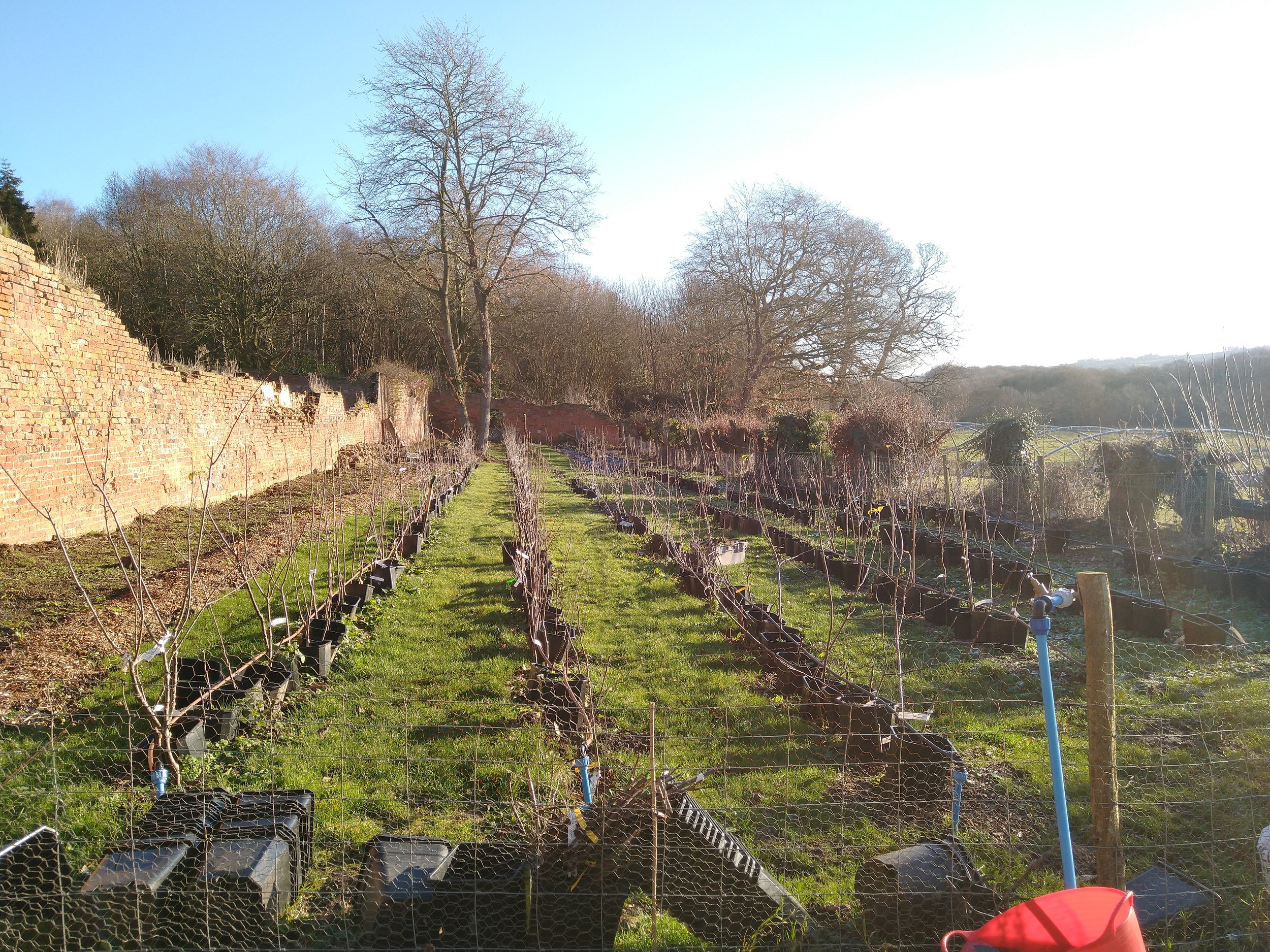

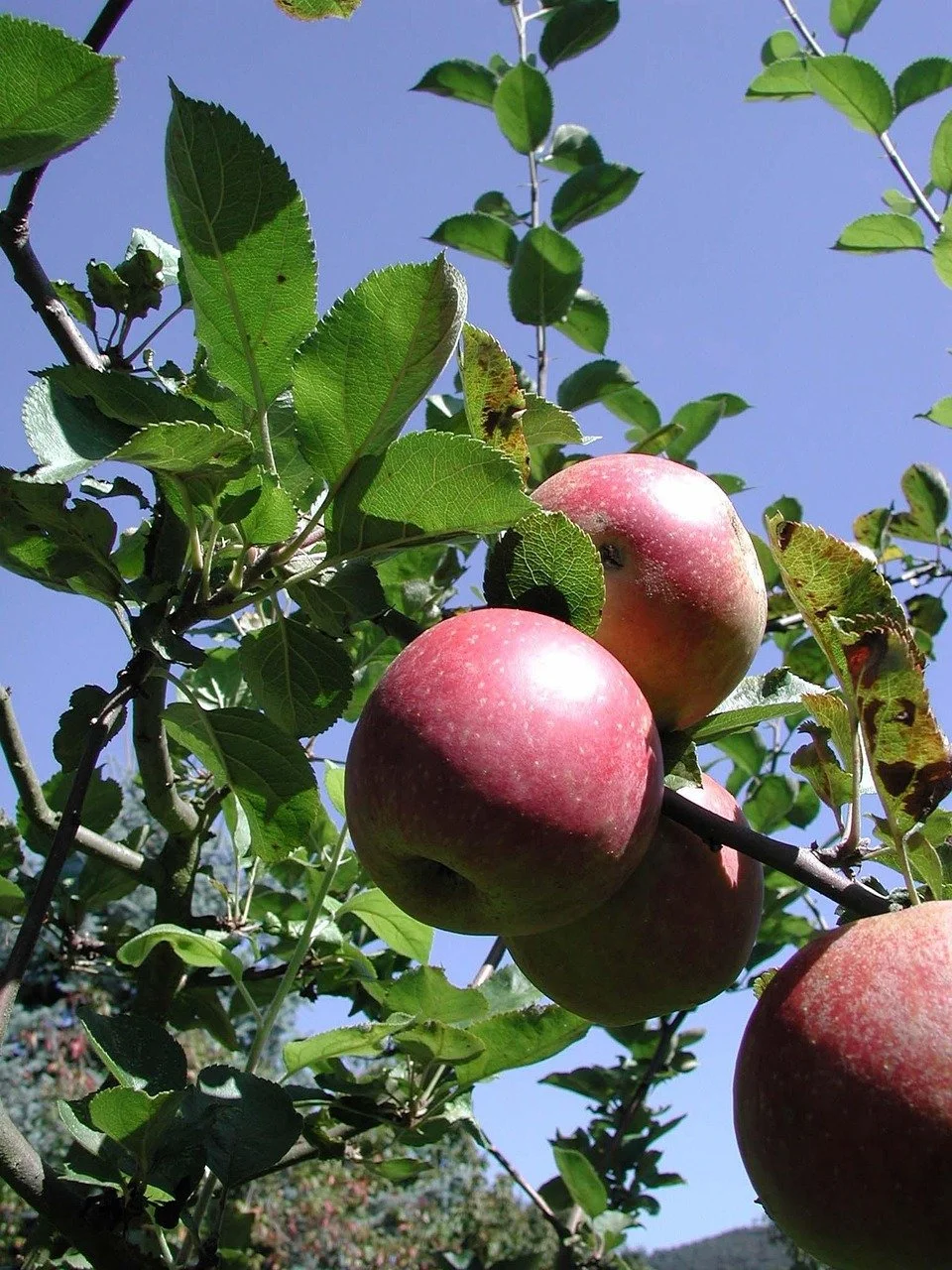
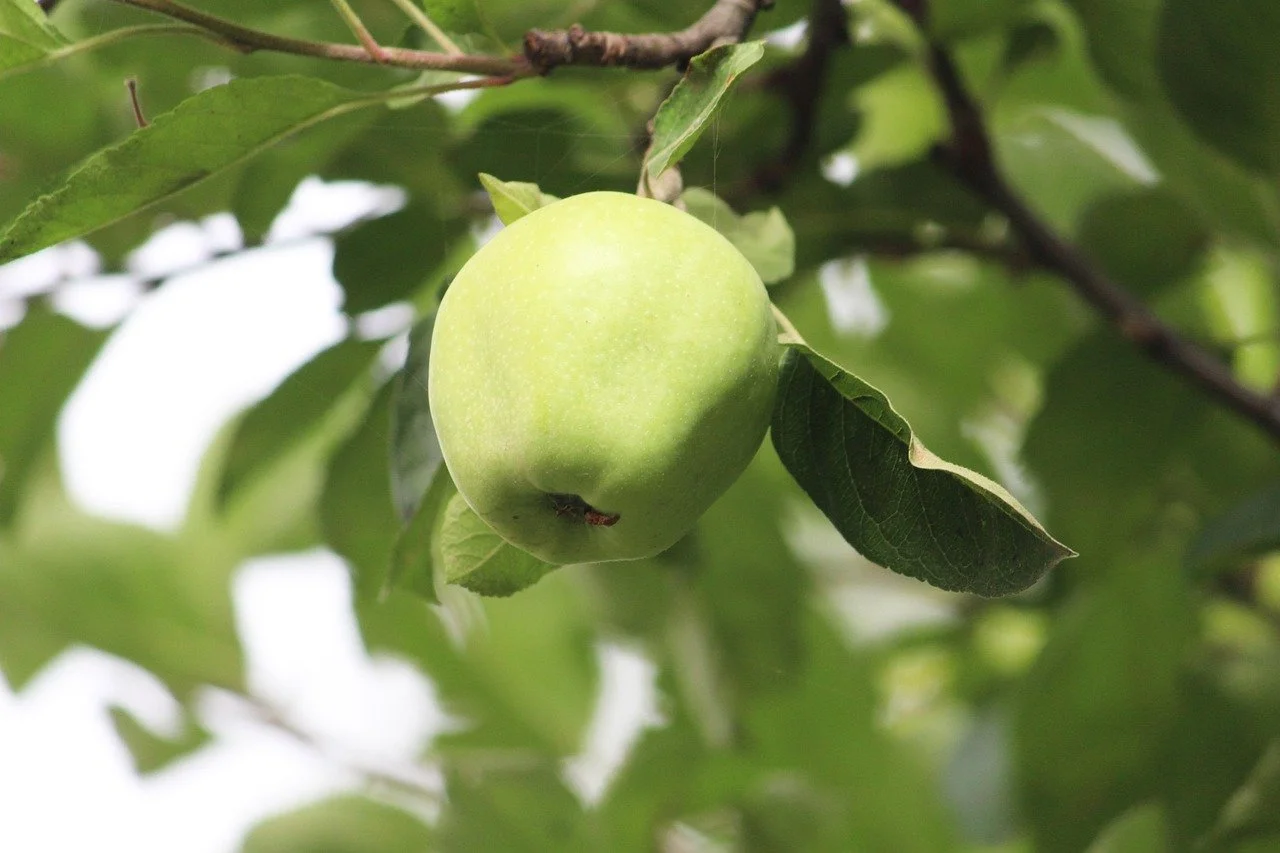
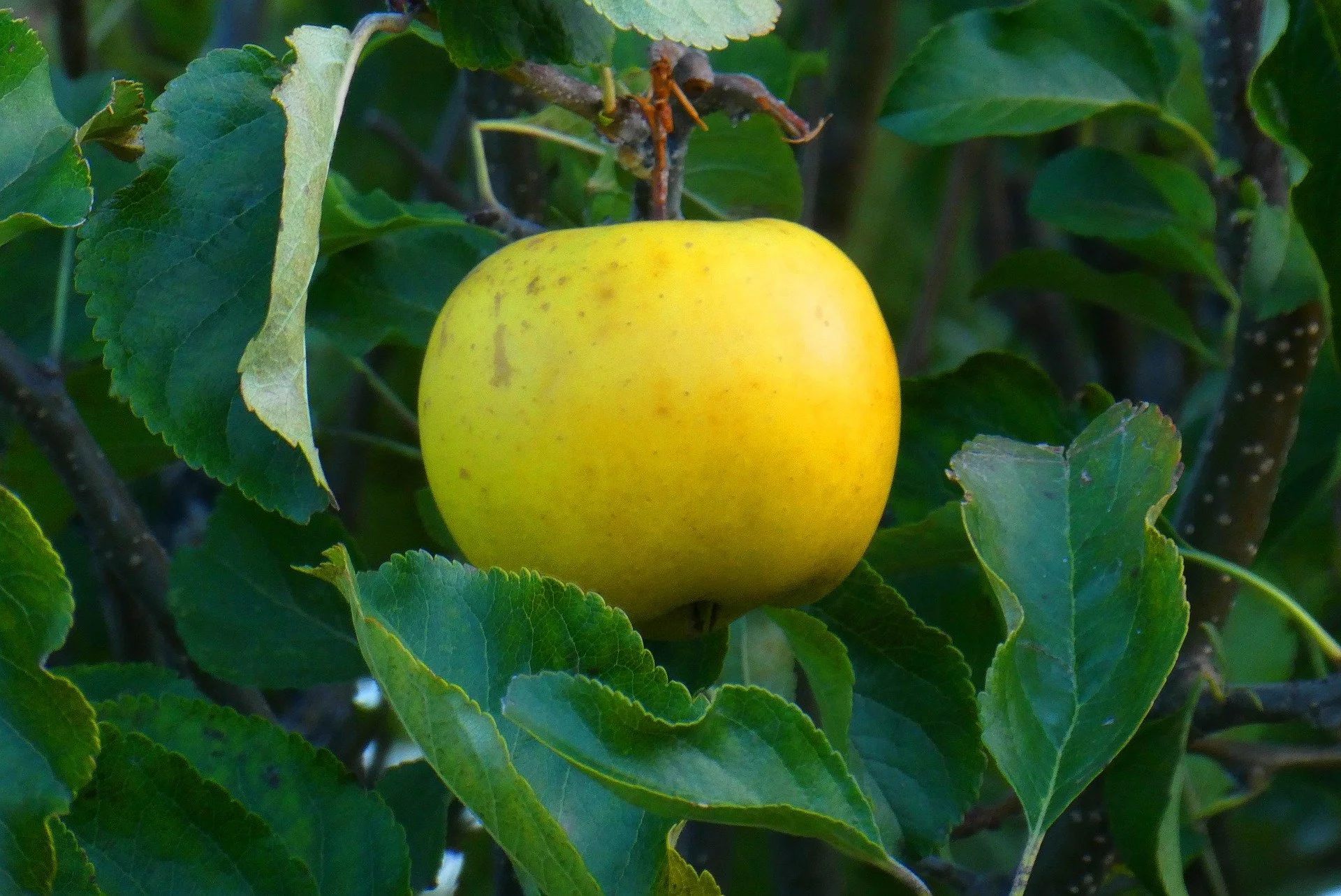




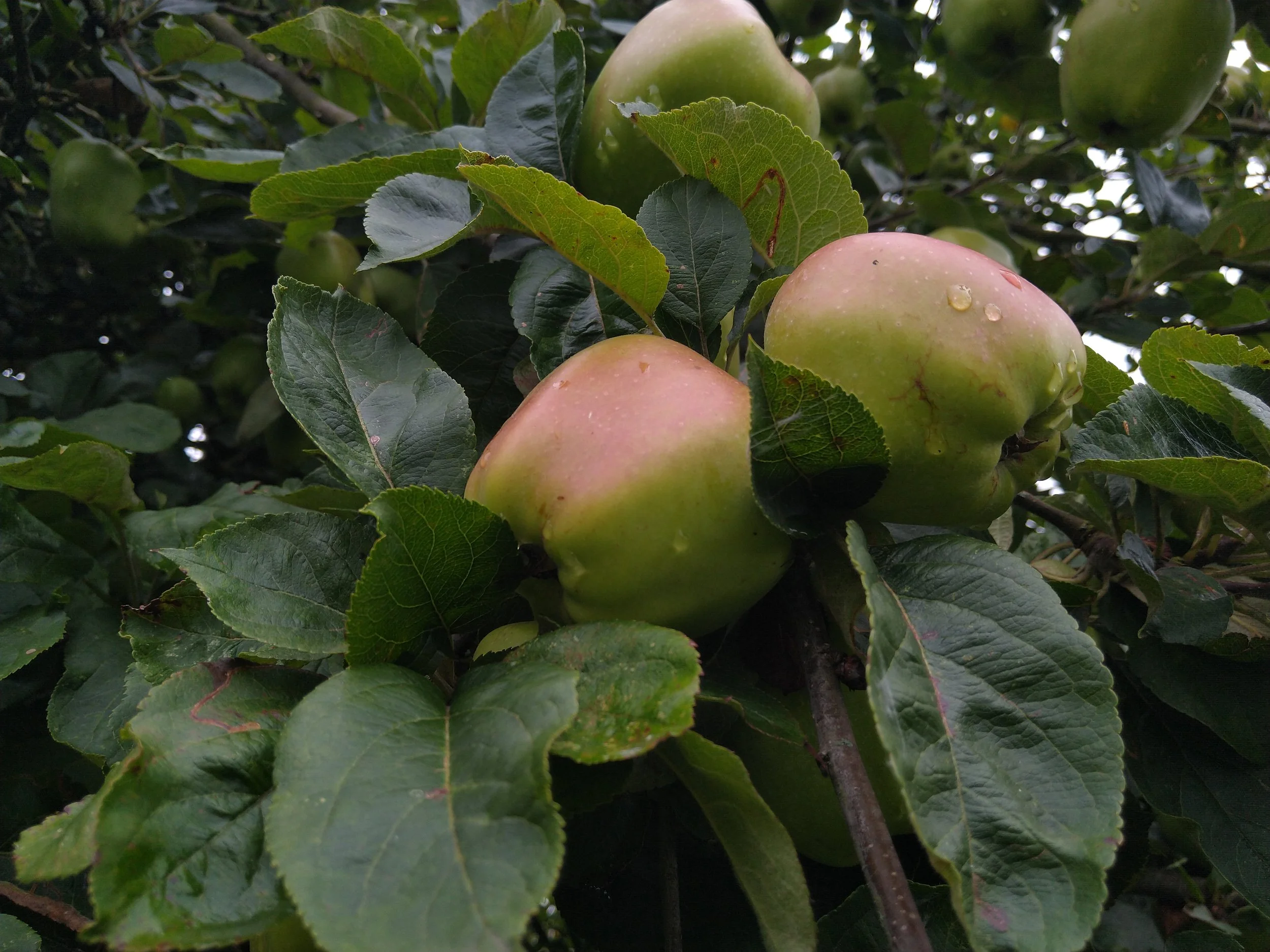
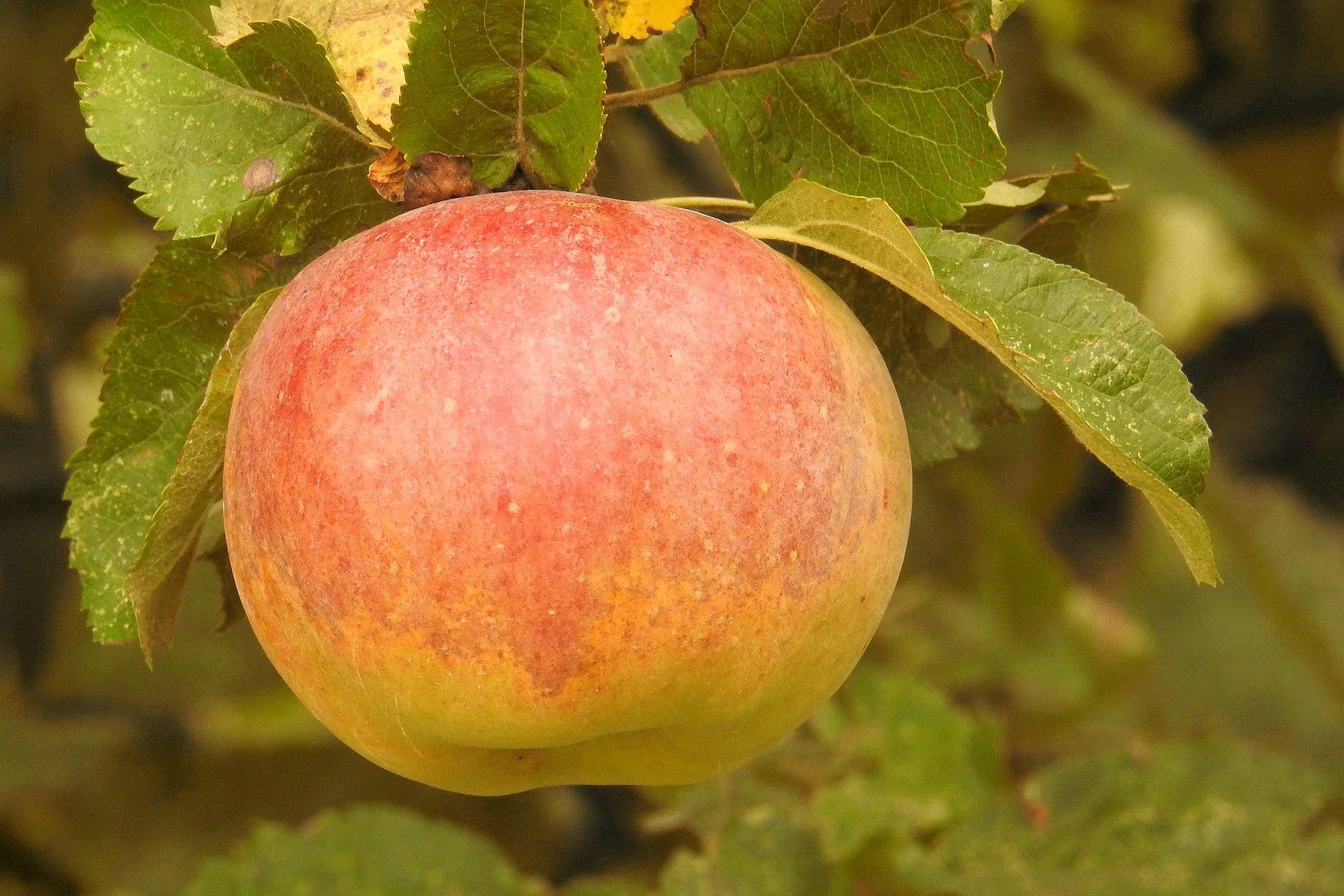

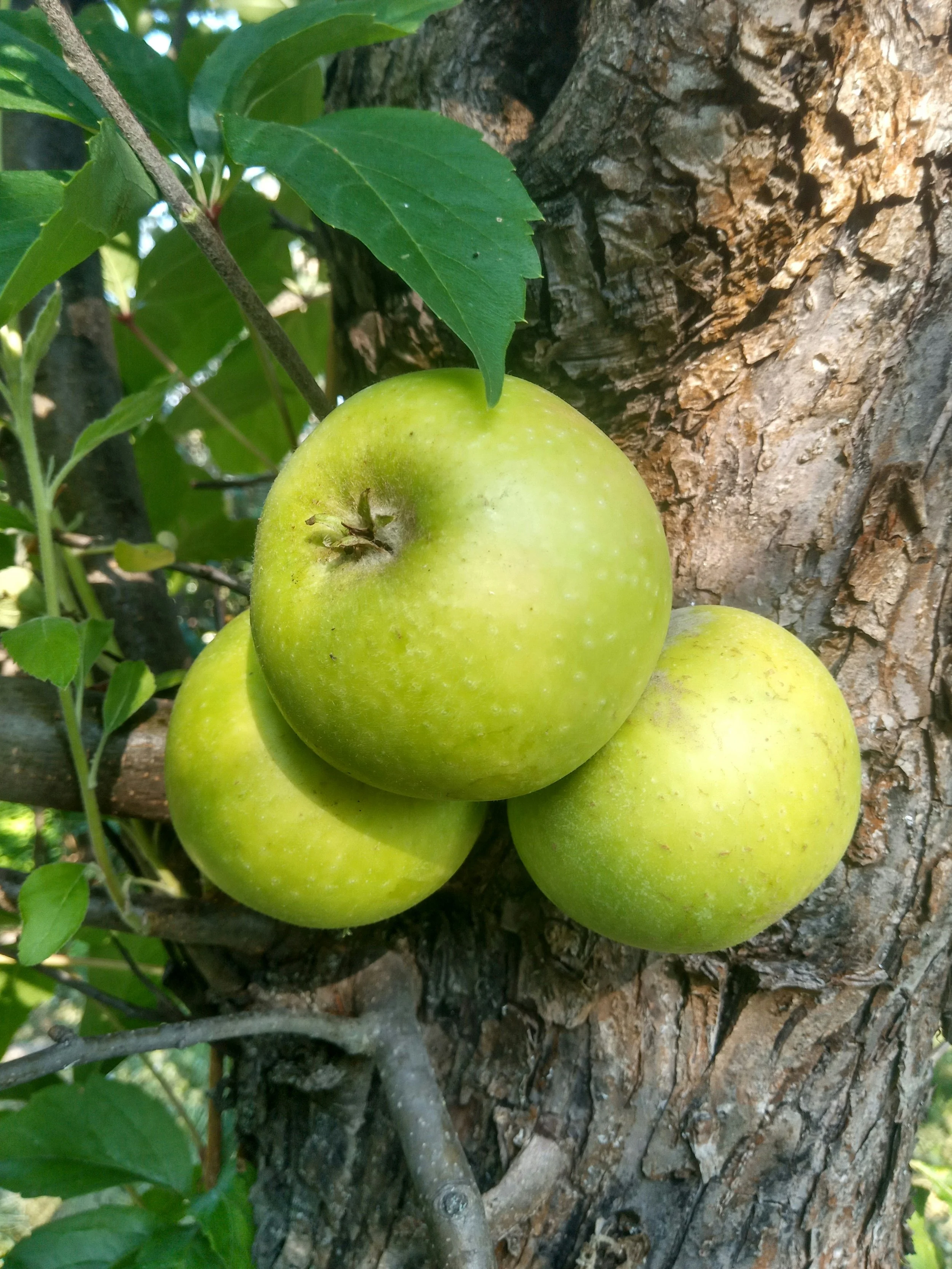
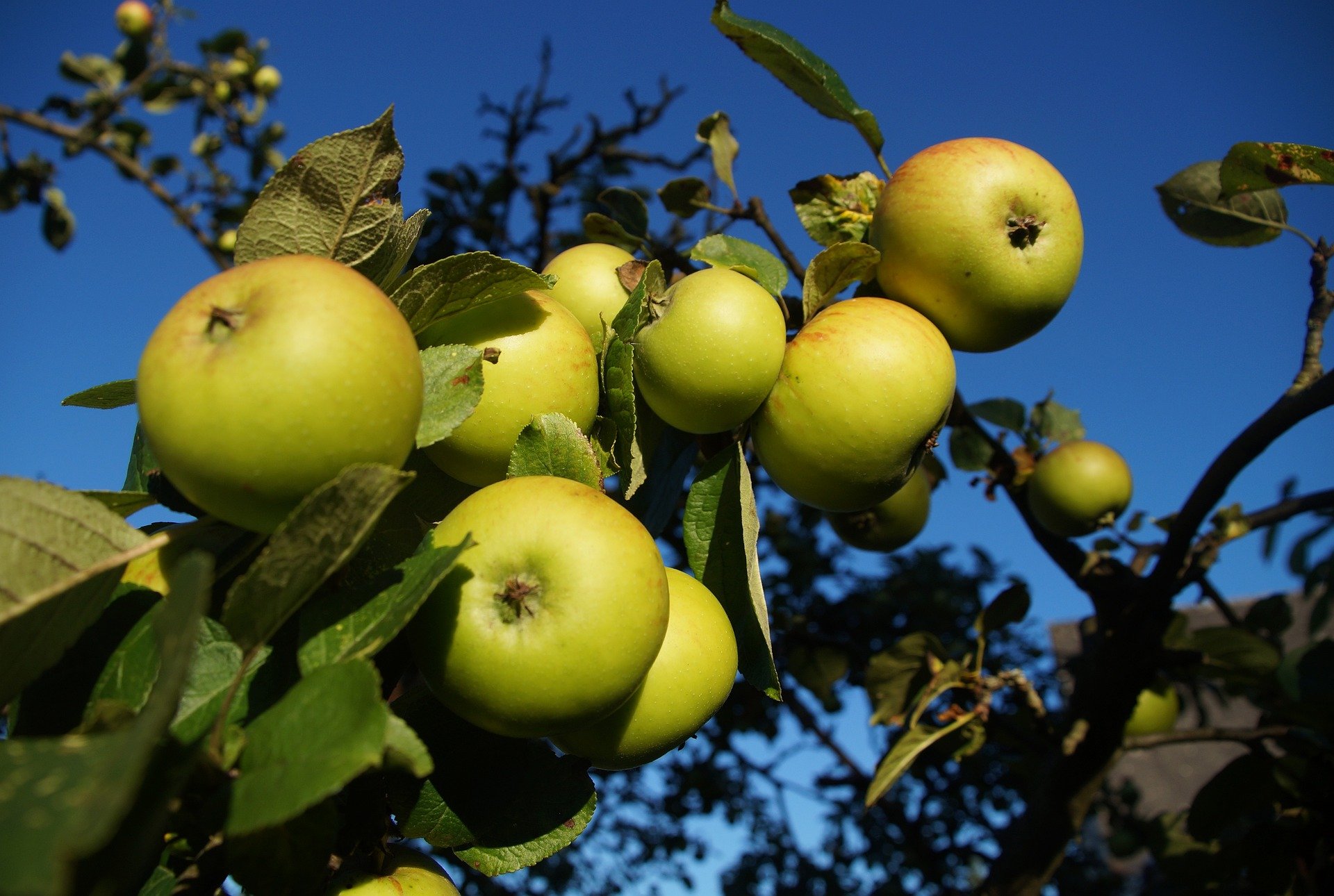





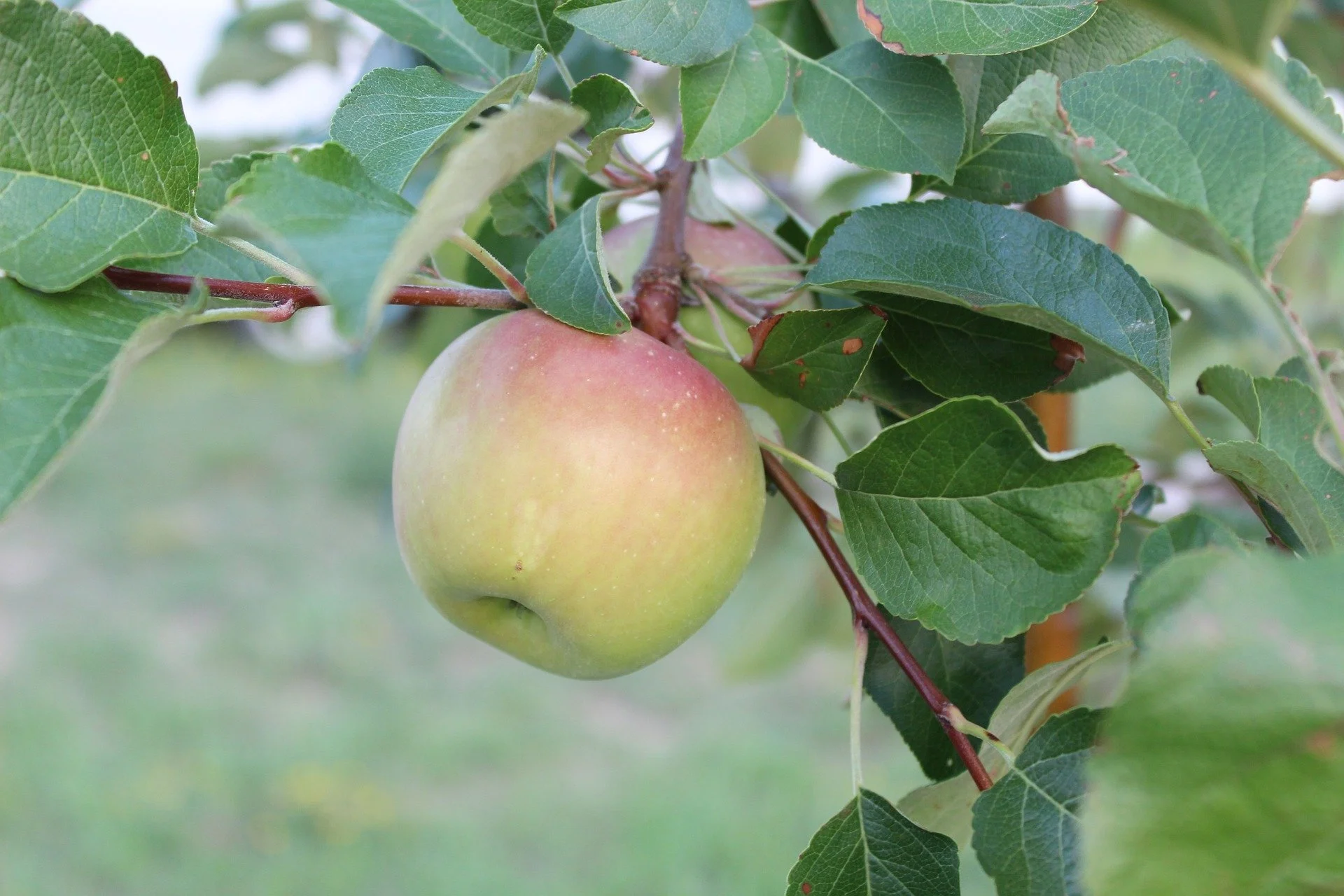
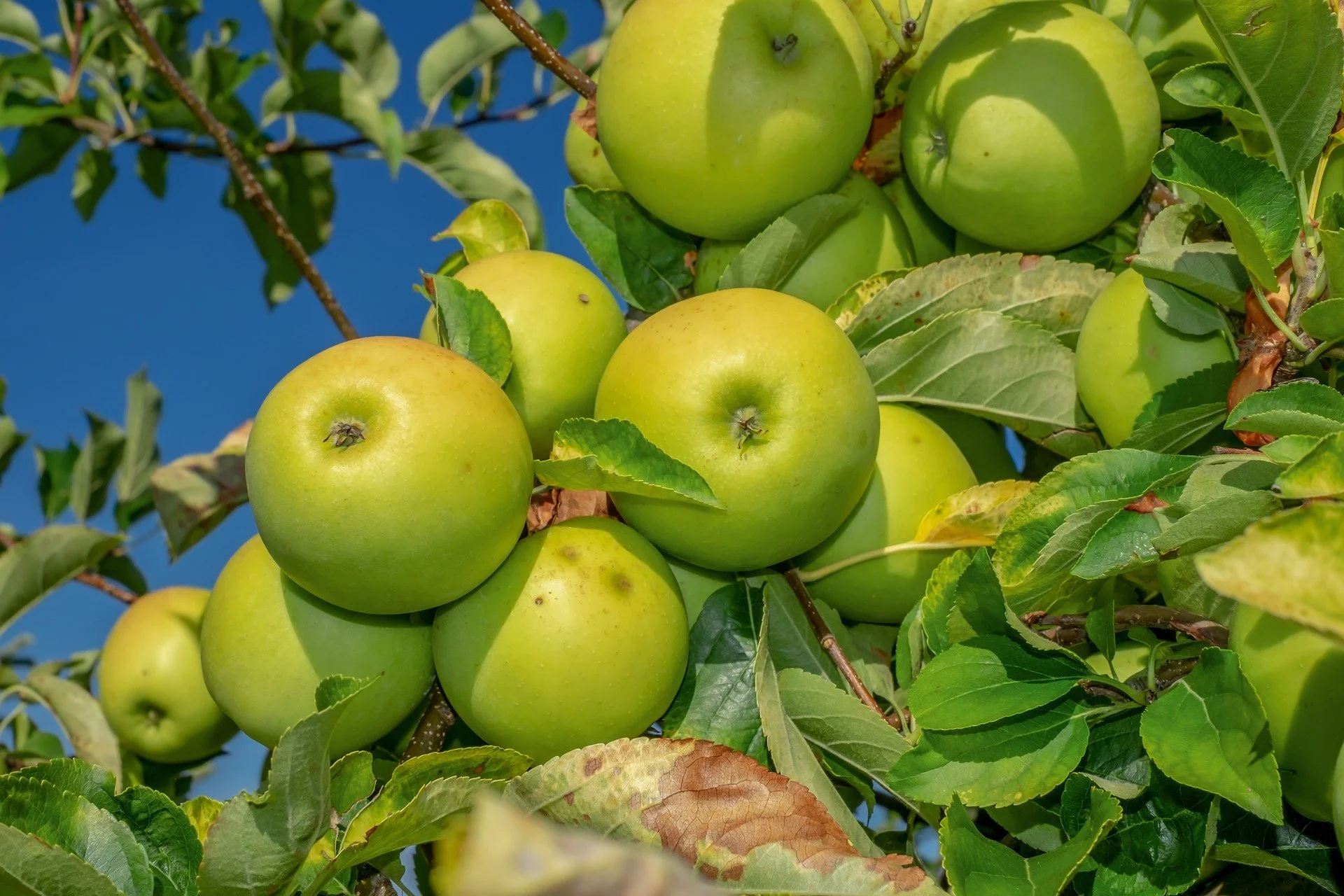

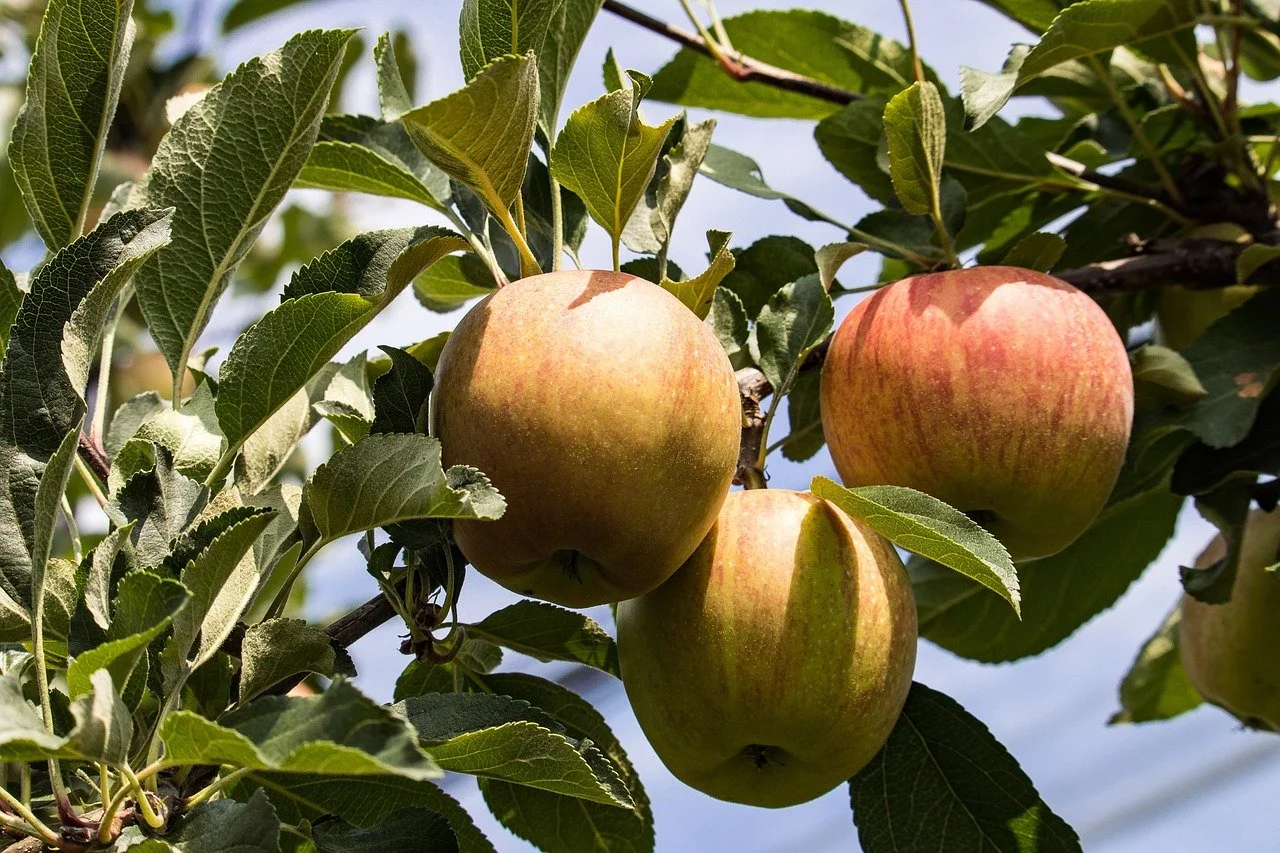







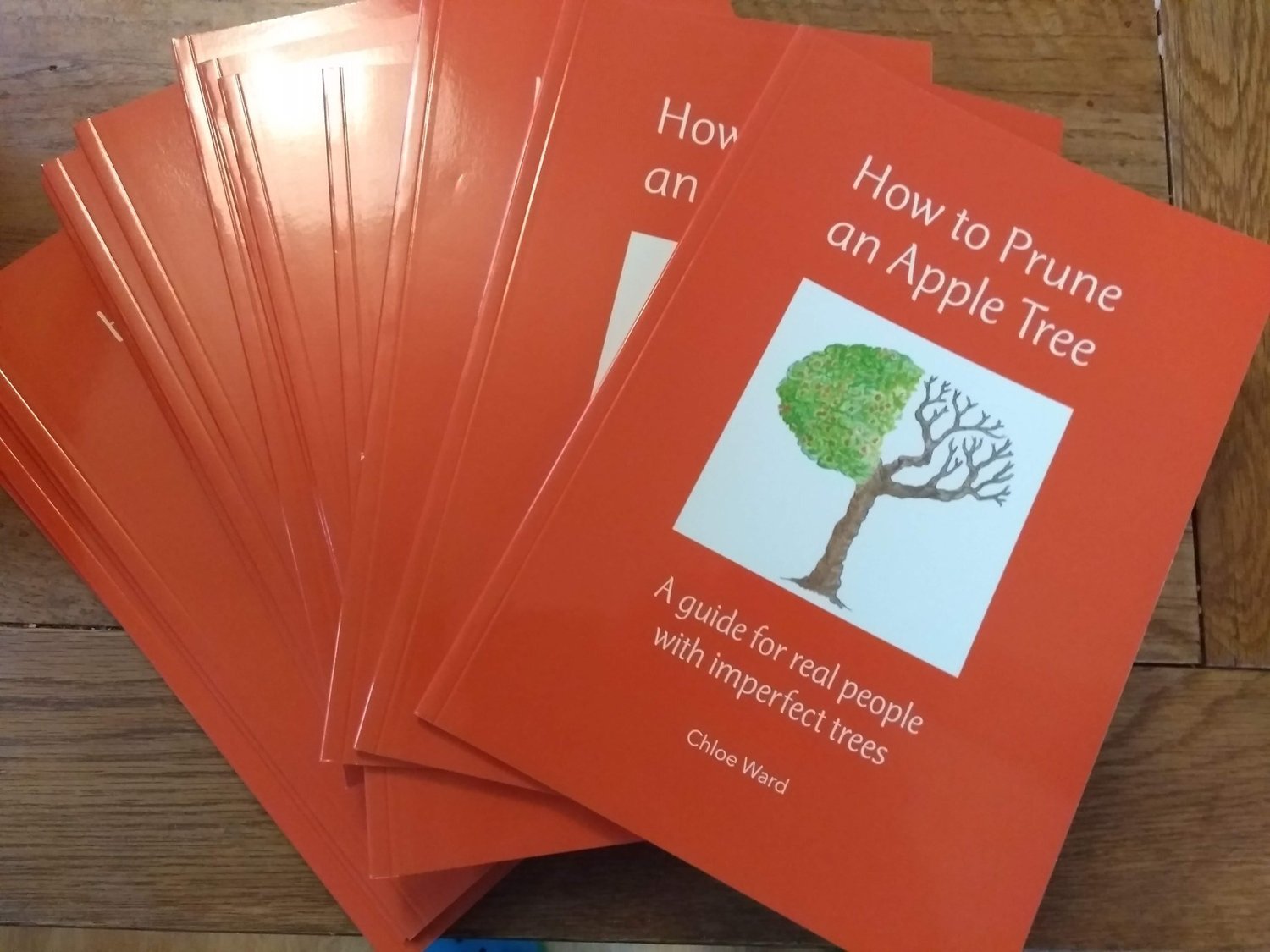
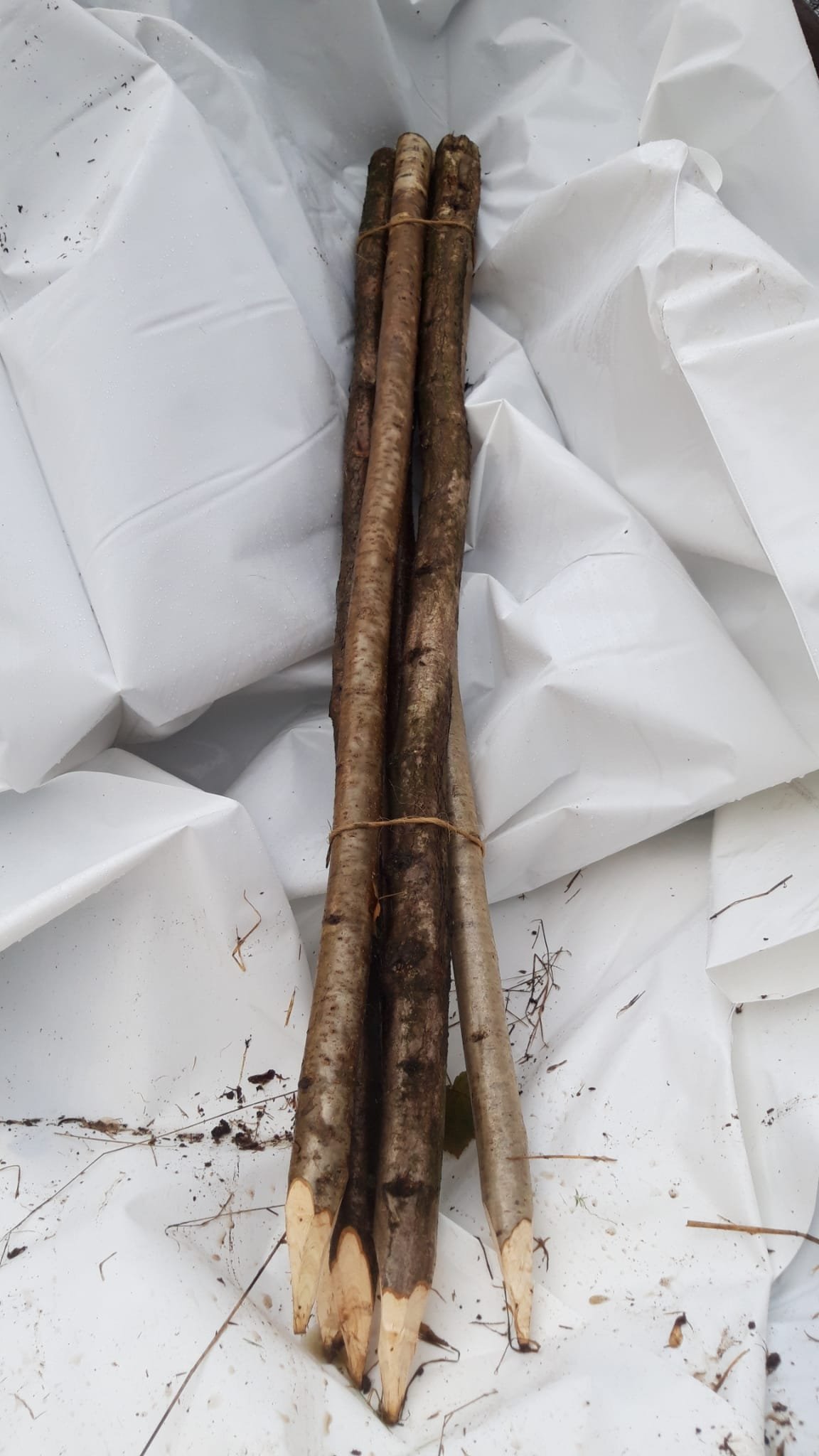
If you buy this product, we’ll pick out a lovely, healthy apple tree for you that we think will meet your needs based on the information you’ve given us in the questionnaire (which you’ll be asked to complete at checkout).